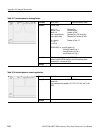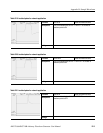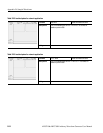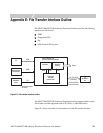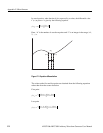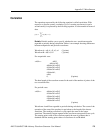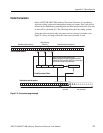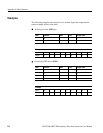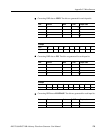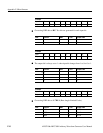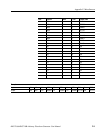
Appendix F: Miscellaneous
F-4 AWG710&AWG710B Arbitrary Waveform Generator User Manual
Convolution
The operation expressed by the following equation is called convolution. With
respect to a discrete system, convolution y(n) of a certain waveform x(n) and a
second one h(i) is expressed by the following equation. N is the number of items of
data.
Periodic. The Periodic enables you to specify whether the two–waveforms must be
regarded as periodic during calculation. Below is an example showing differences
between non–periodic and periodic waveforms.
Waveform A = a0, a1, a2, a3, a4 (5 points)
Waveform B = b0, b1, b2 (3 points)
For nonperiodic case:
A*B = a0b0,
a0b1+a1b0,
a0b2+a1b1+a2b0,
a1b2+a2b1+a3b0,
a2b2+a3b1+a4b0,
a3b2+a4b1,
a4b2,
0, (8 points)
The data length of the waveform created is the total of the number of points of the
two–waveform files.
For periodic case:
A*B = a0b2+a1b1+a2b0,
a1b2+a2b1+a3b0,
a2b2+a3b1+a4b0,
a3b2+a4b1+a0b0,
a4b2+a0b1+a1b0,
(5 points)
Waveforms A and B are regarded as periodic during calculation. The count of the
operation of sum of products is equivalent to the length of the shorter waveform.
The resulting waveform’s cycle equals the same as the longer waveform. The actual
output segment of the waveform corresponds to one cycle. The starting point value
of the waveform equals the sum of products that is obtained with the starting point
values of waveforms A and B added.
y
n() xi()hn i–()
t 0=
N 1–
∑
=



